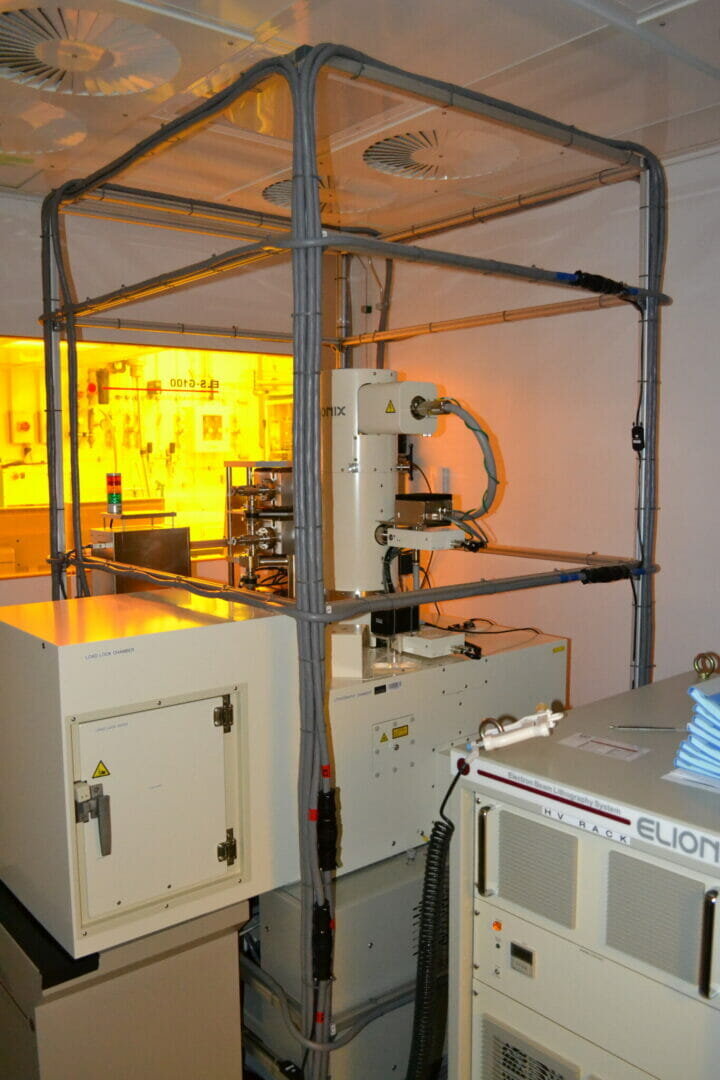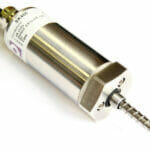Running multiple electron microscopes in close proximity can have a detrimental effect on beam shift and image resolution due to magnetic interference. That proved to be the case when the performance of a £2 million Elionix G100 EBL platform offering sub 10 nanometer resolution was compromised at the London Centre for Nanotechnology. The department turned to Spicer Consulting for a custom solution to magnetic field cancellation.
The London Centre for Nanotechnology (LCN) is a joint venture between University College London, Imperial College London and King’s College London, supporting multidisciplinary research across chemistry, physics, materials science, medicine and engineering in all three universities, as well as other academia and industries both nationally and internationally. Since its inception in 2003, LCN has applied nanoscience and nanotechnology to global issues in healthcare, energy and the environment, and information processing.
At the heart of the facility is a 255 square metre cleanroom, as Suguo Huo, electron beam and ion beam manager, explained: “The cleanroom houses a broad selection of equipment for processes such as photolithography, metallization, ion milling and characterisation, as well as electron beam lithography (EBL) on a RAITH150 Two. In addition, we have three Carl Zeiss focused-ion-beam (FIB) platforms in the basement lab. The EBL, SEM and FIB machines we work with offer highly accurate fabrication and imaging for nano-scale research, and they all require magnetic field cancellation, as ambient magnetic interference can affect the beam shift and accuracy of measurements. To date, we’ve been able to use the standard SC24 from Spicer Consulting to stabilise these fields, as its ability to cover a maximum interference of 100 milligauss was more than sufficient.”
“Last year, we received a grant for quantum computing research which enabled us to buy an Elionix G100 EBL, offering better than 10 nanometre resolution electron beam lithography. However, unfortunately, when it came to using the new platform, we discovered that the magnetic interference in the environment far exceeded 100 milligauss. This resulted in an electron beam shift around 1,100 nanometres – which was far too big for our purposes – and we could not get the resolution we needed for research.”
Suguo continued: “There are multiple factors involved in this. The Elionix is on the first floor just above five superconducting magnets, operating on the ground floor at high fields: 14 Tesla, 12 Tesla, 8 Tesla, 3 Tesla and 2 Tesla. In addition, hosting the platform on the first floor required a thick, steel brace for support in which a magnetic field was being induced. Finally, we had also installed a new AC magnetic field furnace close to the Elionix in the cleanroom. In short, the combined magnetic fields and resulting interference resulted in a loss in performance and resolution if all magnets were in operation.”
“This obviously left us in a quandary and LCN Deputy Director and cleanroom PI Professor Paul Warburton asked me to identify a magnetic field cancellation solution that could accommodate five different magnets in different locations operating at different times and in different directions – it seemed an almost impossible task! We approached Spicer Consulting to ask if they could help develop a custom solution. After an enthusiastic response and a visit from the team to LCN in April 2019 to take measurements, Spicer built up a picture of the magnetic interference and identified a maximum field strength of 550 milligauss.”
“Designing a solution was not simple, as the room layout housing the Elionix couldn’t be altered. In addition, I needed a solution that was easy to maintain – it couldn’t have too many coils – without requiring support from a third party. Spicer was very helpful, responding to my requests, implementing changes and, ultimately, developing a working simulation. The solution lay in using custom-designed high field cables in conjunction with the SC24 cancelling system, and it was installed successfully in September 2019.”
“We restored the platform’s resolution to better than 10 nanometres, and the machine is back up and running. There is now a solution for the worst-case scenario with all the magnets running concurrently, that was delivered within a remarkably short timeframe considering what was required. I know the team at Spicer well and they listened and understood my requirements throughout the design process; they were very helpful. If we buy more platforms and require further improvements to our magnetic field cancellation, I know I can call them, and I have no doubt that when they say they can get it done, they can get it done,” Suguo concluded.









